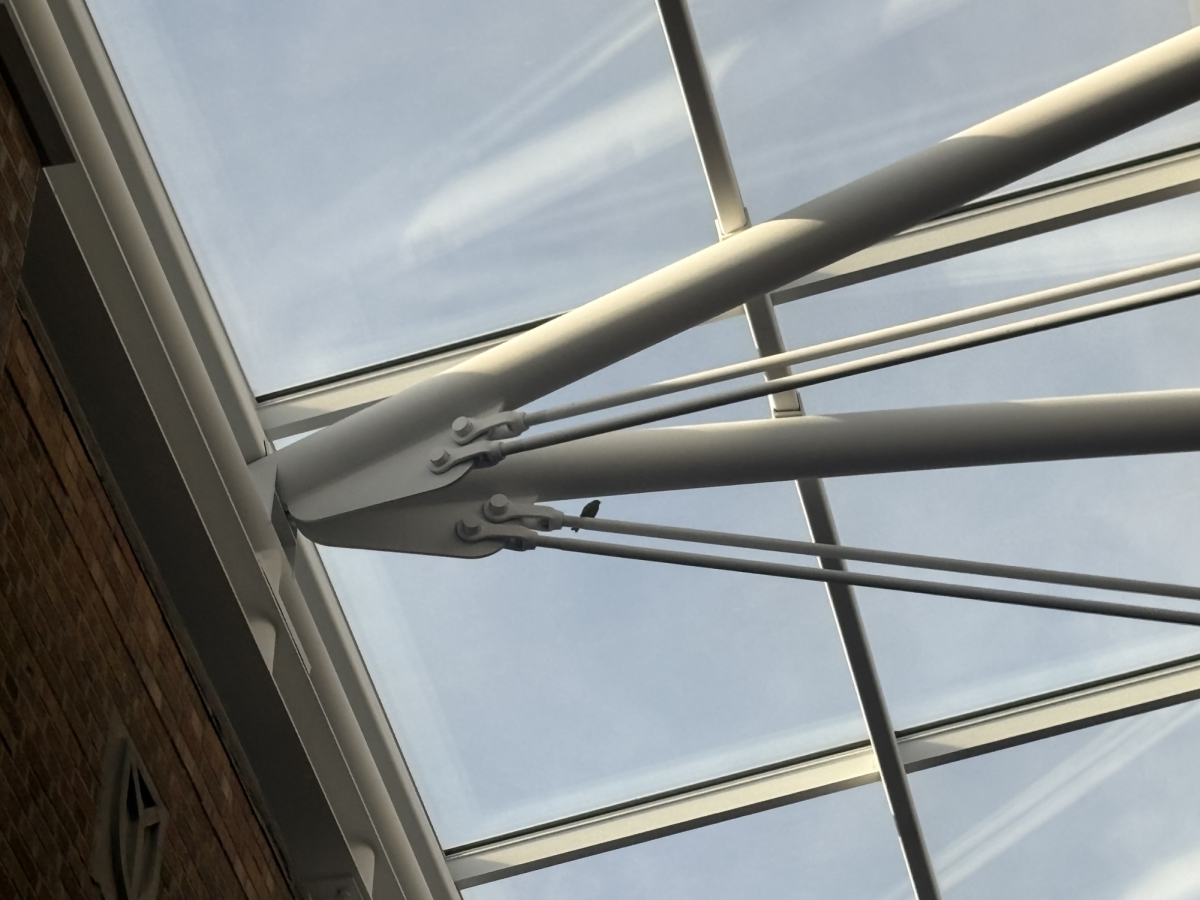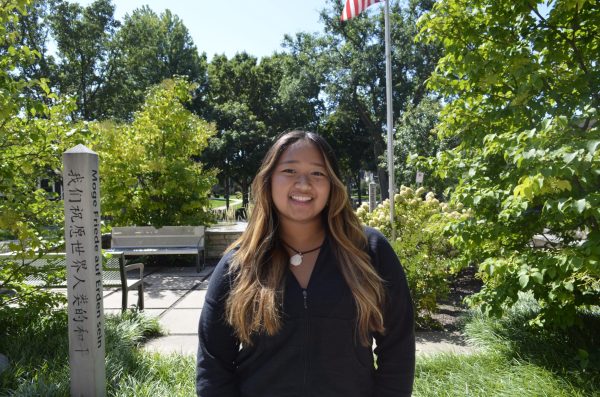Students walked into the Commons on the first day of school and saw a small creature flying from window to window. Was it a bird, was it a plane, was it… oh! It really was a bird. For almost two months, the bird’s incessant chirping echoed through the Commons as it perched on the ceiling’s steel beams, hungry for crumbs left over from lunch but too scared to get close.
“At the end of July, the athletic trainers reported that it had gotten in,” building and grounds supervisor Michelle Cannan said. “I’m assuming it came in through the athletic trainer’s door to the Purple Gym, and then it made its house in the Commons once it got out of there.”
After school Sept. 18, the bird flew through the student café into the Club Room, where CMG staff members were finally able to capture it after two months of trying.
“There were about four custodians trying to catch it,” CMG staff member Darin Gipson said. “It landed inside the garbage can, so they were able to close the garbage bag around the bird. Then they took him outside on Forest Street, opened the bag, and it flew away.”
However, the next morning, the CMG staff found an identical-looking bird dead on the patio after trying to get into the building.
“I miss that bird,” senior Jaz Rivas said. “I noticed it was extra quiet in here today. I didn’t hear his little chirps.”
Junior Charlotte Garst was one of the first students to see the bird, whom she nicknamed “Melvin,” make its new home in the Commons. During lunch breaks at drumline camp over the summer, she and other drumline members would see it fly around and sometimes land on the nearby tables.
“We thought he would be gone by the time we got back to school,” Garst said.
In the months leading up to its capture, both students and staff tried different methods to get the bird out of the building. The building and grounds staff utilized a mist net along with live capture cages, neither of which worked. The bird also wouldn’t leave over the summer when the windows were being replaced or when the door was left open.
The mist net proved unsuccessful because the lifts don’t go high enough for the building and grounds staff to be able to hang it in the bird’s vicinity. Additionally, the bird was small and light, allowing it to get into the live traps and take food without getting caught.
“We literally can’t get up to the height that the bird is at,” Cannan said. “Even if we could, the bird would be gone by the time we got up there.”
Students, on the other hand, tried more unconventional methods. Seniors Olivia Buirge and Lucia Madden also attended drumline camp over the summer, where they became some of the first students to see the bird.
“I set out a whole charcuterie board for the bird,” Buirge said. “I also ran after him to scare him out of the door, but it didn’t really work.”
Buirge and Madden attempted to lure the bird out by propping the door open, holding up snacks from their lunch, and making bird noises. To their dismay, the bird retreated further into the Commons.
“Basically, you have to pretend you’re a bird because Melvin will think you’re his friend and come to you,” Madden said.
The unconventional bird-trapping methods did not stop there. Interviewed students suggested taking a window pane out of the ceiling, calling animal control, or even hosting a schoolwide assembly in the Commons where all students and staff hold worms in their hands to lure the bird into a large net.
“I was thinking that maybe the solution is to get a cat, but then we would just have a cat walking around the Commons,” director of student activities Mark Mirandola said. “And then we’d have to combat that by getting a dog, and then we’d have all of these different animals trying to get one bird out.”
While the bird was able to evade any attempts to catch or remove it from the building for two months, its ability to survive on its own in a new environment was a completely different matter. The process of collecting food and water or even performing natural bodily functions is much different in the school than in its natural habitat.
“It’s hanging out in a pretty open spot with no predators, and nothing is trying to eat it or able to catch it,” AP Environmental Science teacher Kathleen Troyer said. “It’s probably living large, picking up all the scraps and food and stuff that students leave behind.”
There was plenty of food for the bird to live off of, from the crumbs left over from lunch every day to the food in the traps that it wasn’t big enough to get caught in. Additionally, the plants in the Commons held enough moisture for the bird to stay hydrated during its stay.
“One day, I was looking out of the window in my office and I saw it flying up with a giant piece of bread in its mouth,” Mirandola said.
Having a bird in the Commons brought about some concerns regarding hygiene, such as any potential germs or diseases the bird could bring from the outside world or the possibility of the bird relieving itself on or near people in the Commons.
“Hopefully it’s not happening where someone’s eating,” Troyer said. “I know the atrium has some vegetation so maybe that’s where it’s hanging out and doing its business.”
There has been one known incident in which the bird “did its business” on a faculty member. During the institute days before the school year started, a librarian from DGS asked for a new shirt because the bird had pooped on his back.
The bird will be missed dearly by the students and staff of DGN. Its ability to defy expectations and last as long as it did in a strange environment is an inspiration to all.
“I definitely wish the bird well, we wanted to have a memorial for it,” CMG staff member Joshua Harper said. “It’s an emotional day.”




